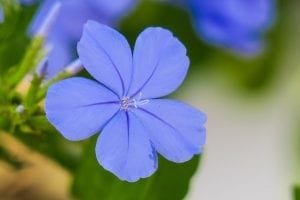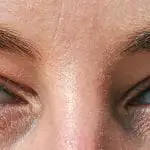Image credits: Wikimedia Commons
From the light blue sky to the deep blue ocean, evergreen forests to the white plumes of the cloud, we are surrounded by colors. We use our favorite colors to beautify our surroundings while different hues can reflect our personalities or bring out certain emotions in us.
Colors play a major role in our lives and have the power to make us sad, happy, angry, spiritual, and energetic.
Most of us are conditioned from early years to associate certain colors with emotions or genders. While boys are given blue-colored clothes or blue objects as gifts, girls receive pink-colored gifts or clothes. The color red may signify danger or fire, while green brings to mind nature or healthy food. Psychological studies prove that colors can influence our feelings and moods in a significant way.
What emotions or associations does the color blue evoke in you?
Blue – The cool color
Blue is one of the three primary colors – with red and yellow being the other two – and is required to create all other colors. It is also the favorite color of many people. A worldwide survey indicates that across ten countries, blue is the most preferred color.
It is also perceived to be a ‘cool color’ as opposed to reds, oranges, or yellows that are classified as ‘warm colors.’ So, what makes blue a cool color?
Colors are classified as warm or cool, and there are many theories behind such categorization. One such theory is based on the position of colors in the “color wheel.” A color wheel is an abstract illustration of color hues arranged around a circle and shows the relationship between primary, secondary, and tertiary colors. While the right side of the wheel contains warm colors of red, orange, and yellow, cool colors – blue, violet, and green – are on the left side.
The second explanation is based on the energy of the colors. Sunlight splits into a spectrum of colors when it passes through a prism. Colors such as red, orange, and yellow that have the longest wavelengths and lowest energy are categorized as warm colors. Cool colors are those that have shorter wavelengths and higher energy, such as blue, violet, and green.
The other classification looks at the feelings they evoke. Warm colors, including yellow, red, and orange, are associated with fire and sun and denote warmth and comfort. Cool colors remind us of earthy objects such as water, grass, and sand. These hues feel refreshing and cool as they represent nature and the outdoors.
Blue objects in nature

Image credits: Pixabay
From oceans to rivers, the sky to eyes, there are many things in nature that are blue. In fact, the color blue is one of the predominant colors in nature, apart from green. The earth mostly appears blue from space, as 71% of the surface of the earth is covered by water. The blue sky is the next thing that comes to mind when talking about blue objects in nature. The sky appears blue because the sunlight contains a spectrum of light with different levels of energies, and the blue color is scattered more efficiently by the atmosphere. About 8 to 10% of people across the globe have blue eyes. Although rare, there are some gorgeous flowers that are naturally blue, such as the hydrangea, Blue Himalayan poppies, annual cornflowers, Morning Glories, Delphiniums and Gentians.
Brilliant shades of blue can also be found in precious gems such as sapphire and turquoise. The exotic blue diamond has a noticeable blue tone because of a mineral called boron that is found naturally in the diamond. The colors of these appealing blue diamonds range from a pleasing light blue to mesmerizing deep blue mixed often with secondary hues of gray, green, or violet.
Apart from being the favorite color of most people across the world, here are some other facts that show how popular the color blue is:
- The color blue features in 53% of the world’s flags.
- Blue is the predominant color used by organizations to denote their corporate identity.
- Blue attire denotes good work ethics, while dark blue suits are considered to be one of the most professional business attire.
- Blue jeans are highly popular across the world.
The many benefits of blue
There’s much more to the color blue than its pigments. While it is a powerful color in the visible spectrum, there are multiple reasons why you should surround yourself with blue objects and blue hues.
Physical health – Researchers studied the effect of different colored lights on blood pressure and heart rate of study participants. They found that while red light increased heart rate, blue light lowered it. Another 2018 study at Heinrich Heine University and the University of Surrey found that blue light exposure decreases blood pressure, which helps reduce the risk of cardiovascular disease.
According to a report, 80% of healthcare companies use logos featuring blue color. Some of the well-known healthcare brands include McKesson, Amerisource Bergen, and United Health Group. In healthcare centers, blue is often the first choice as it is associated with cleanliness, credibility, knowledge, calm, and focus – all of which are highly valued in the field of medicine.
Mental health – Blue light has a calming effect, reduces impulsiveness, and has even been found to reduce suicidal tendencies. At the Yamanote railway line in Tokyo, blue lights were placed in platforms, which helped reduce suicides by 74%. The success of this experiment led to blue lights being installed also at train platforms at Gatwick Airport. Different shades of blue are associated with attributes such as trust, security, high quality, reliability, and courage. Unlike warm colors, blue exerts a more mental response rather than a physical reaction. This allows us to calm down, destress, and unwind.
Brand trust – In the world of marketing, the color blue and the feelings associated with it have been extensively researched. Compared to red, blue is perceived to be non-threatening and is the ideal choice for businesses looking to project security, dependability, and peacefulness. Using blue strategically in branding, product design, and advertising helps portray the brand image effectively.
Because of the positive impacts that blue objects or blue color has on productivity and mood, many workplaces are painted blue to help promote calmness, stability, and morale. Blue objects are also used to decorate offices as research shows the color boosts productivity.
Creativity – Researchers at the University of British Columbia found that blue environmental cues encouraged out-of-the-box thinking as well as creativity. The creative outputs that the study participants produced were twice as much with the blue color cues as compared to red. With blue being associated with natural elements such as water, ocean, and the sky, the cues people get from the color are openness, tranquility, and peace. The color blue makes us feel safe about experimenting and being creative.
Spirituality – With the sky being associated with all things celestial, the color blue is equated with the love of truth and God. Spiritually, the color blue symbolizes God’s healing powers. Verses 38 to 41 in the fifteenth Chapter of Numbers touch upon the biblical significance of blue.
The psychological impact of blue objects
Cool colors influence the visual perception of objects that you see around you. For instance, warm colors induce a feeling of warmth, heat, and promote activity, which makes them an ideal choice for living rooms, workplaces, and gyms. Advertisers use warm colors in branding to promote the ‘fear of missing out’ or a sense of urgency as well as cheerfulness and optimism.
Cool colors can help make a space look more open and are often used in smaller rooms to make it look larger than it actually is. Additionally, blue objects can induce relaxation and a sense of making them a perfect choice for places where tranquility is needed, such as bedrooms and bathrooms. The color blue also is associated with wisdom and health, which is the reason why it is often used in hospitals and healing centers. Advertisers use blue to evoke feelings of security, trust, and respect.
Shades of blue and emotions
Multiple positive emotions are associated with the color blue. If you are considering surrounding yourself with blue objects, it is also important to know that the shade of blue may also matter.
While darker shades of blue are believed to denote authority, intelligence, dignity, and trust, brighter blue shades are linked to coolness, cleanliness, dependability, and strength. Light blue denotes serenity, peace, spirituality, infinity, and ethereal.
Most blues, however, convey loyalty, trust, understanding, and cleanliness.
Now that you know more about the power of blue hues, you can experiment with different ways of incorporating the color in your life. While you can spend more time outside to gaze at the blue sky or the ocean, you can also give your home a makeover with blue objects such as rugs, cushions, candles, paintings, or vases in various shades of blue. While there is no need to overdo, introducing the color blue in your life in small ways can go a long way towards influencing your mood and health in a major way




